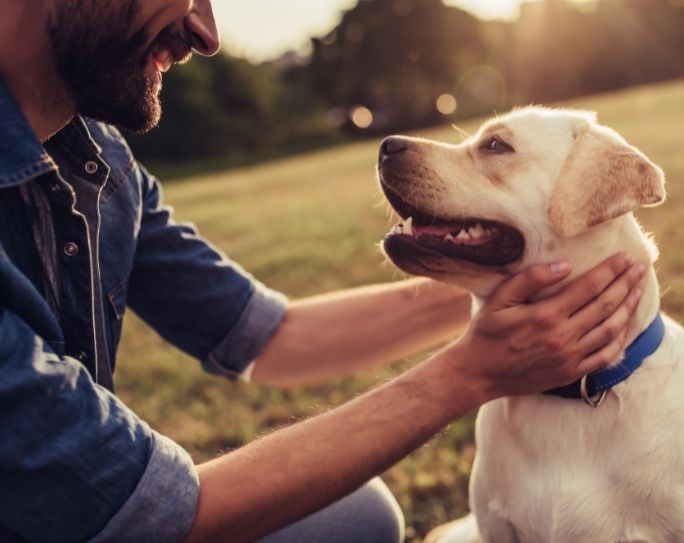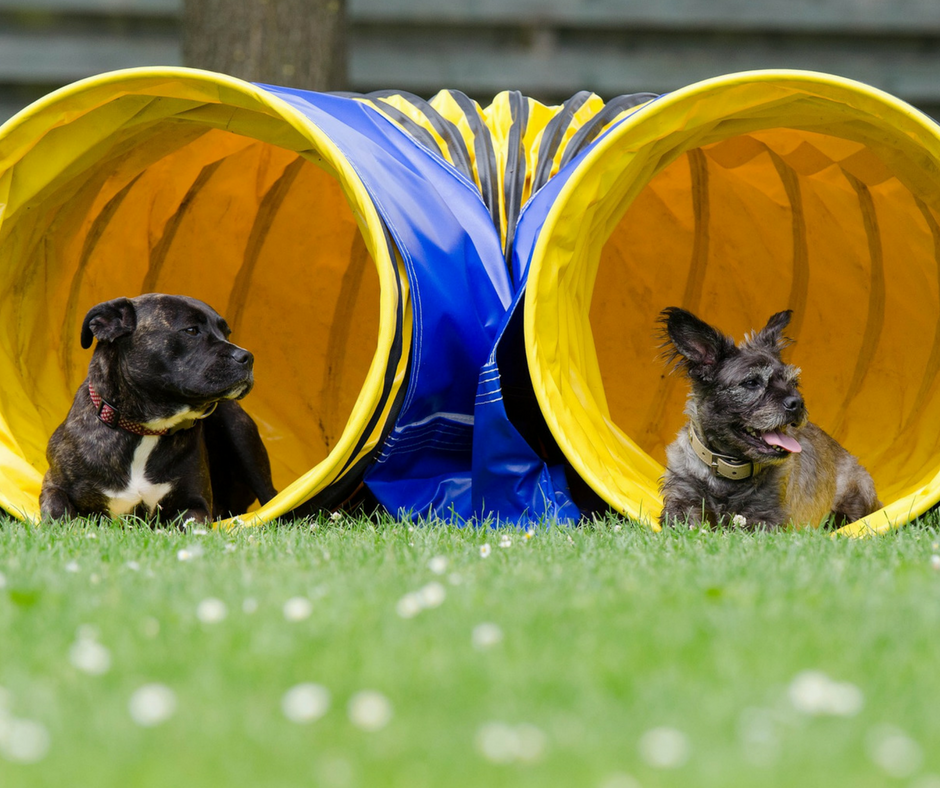Enrichment: Add this ‘ingredient’ for the best dog visits
By Beth Stultz-Hairston | August 23, 2018
Incorporating new canine-enrichment activities can take your services to the next level.

Merriam-Webster defines “enrich” as “to make rich or richer especially by the addition or increase of some desirable quality, attribute, or ingredient.” As a professional pet sitter or dog walker, don’t you want to make the lives of the pets in your care richer? Of course you do!
So, what’s the “missing ingredient” from your pet-sitting visits and dog walks that could help make the dogs you care for happier and healthier? Canine enrichment. The interaction and activity you provide by visiting and walking your canine clients certainly improves their quality of life, but is there more you can do to add enrichment during your 30-45 minute visits?
The Fear Free Happy Homes course “Activities and Enrichment 101” explains that physical, exploratory and social activities are all needed for enrichment. So, let’s look at how you can incorporate these three elements into a basic pet-sitting or dog-walking visit.
1. Physical. As an ASPCA Virtual Pet Behaviorist explains on WebMD, wild dogs spend almost 80 percent of their time walking as they hunt for food, and many domestic breeds have worked alongside humans for thousands of years hunting, farming and serving as protection. Their survival was dependent upon physical activity and problem-solving and today’s dogs need opportunities to practice those same skills.
Incorporating play into your dog visits provides them with exercise and fun, and can help reduce their stress levels. However, before introducing any new activities into your pet-care routine, be sure you have your client’s permission and that the physical activities you offer are appropriate for the dog’s age and health. While a younger dog may prefer a rousing game of fetch, a leisurely stroll may be more desirable for some senior dogs.
For dogs capable of more physical activity, look for creative activities beyond your basic game of fetch to enrich your visit. Consider these ideas:

- DIY obstacle course: While you can’t carry a professional-grade agility course from home to home during your pet-sitting schedule, consider using simple items like orange cones, a hula hoop or collapsible tunnels (typically used for child’s play) to create a makeshift agility course that you can easily carry in your car. This article on the Hill’s® website offers some additional ideas for creating your own dog obstacle course.
- Chase, with a twist: Dogs have a natural instinct to chase, and finding ways to incorporate this into your visits allows them to practice this instinct in a non-destructive way—and it’s a great source of mental and physical stimulation as well. Now, before you balk at this idea, thinking you aren’t up for chase—they won’t be in pursuit of you. A flirt pole (sometimes called a “flirt stick”) can be your secret weapon at pet-sitting visits. For those unfamiliar, a flirt pole is basically a long pole with an attached rope that has a dog toy at the end. This activity can be especially useful for assignments when a dog is to be let out in the backyard, but doesn’t go on a walk. To encourage the dog to engage with the flirt pole, you drag the toy around on the ground in circular motions so the dog can chase and play with the toy. This activity can be high impact, so it may not be the best idea for senior dogs or dogs with mobility issues—and for any dog, keep the sessions short so you can watch out for over-exertion. You can buy a variety of flirt poles, but as this video from YouTube user “TheDarlingDog” shows, it’s also easy to make your own.
2. Exploratory. Activities and games that allow dogs to explore and also utilize their problem-solving abilities are also necessary for enrichment. As Katenna Jones, ScM, ACAAB, CCBC, CDBC, CPDT-KA, advised in her article “Enrichment for Pet Sitters” in the March/April 2018 issue of Pet Sitter’s World magazine, pets need opportunities to interact with their environments and “stimulation of all senses, including taste, touch, hearing, smell, and sight.”
A simple way to promote a dog’s sense of exploration is to be mindful of not rushing them on walks. While you have to stick to a timeframe for the dog-walking visit, allow time for “sniff breaks,” even if that means you may walk a shorter distance (but the dog gets the same amount of time outside with the added stimulation from the opportunity to “go sniff”). Changing your dog-walking route (as long as you ensure the new route is safe) is another great way to offer dogs more sniffing opportunities.
Beyond your typical walk and “sniff breaks,” consider also incorporating these activities when possible:
- Scent games: Even simple scent tasks can be beneficial and are great activities for bored dogs, and they can be particularly helpful when inclement weather limits outdoor activity. One easy idea is to play “find the treat.” Make sure you have your client’s permission to offer treats and if so, bring multiple small cardboard boxes. When the dog isn’t looking, hide the treat inside/beneath one of the boxes and then have him sniff out the correct location to receive his treat. This article from Modern Dog shares eight fun scent games you may consider implementing during your visits.
- Puzzle toys: Puzzle toys can be a great addition to your typical pet-sitting visits, but be sure to get your client’s permission. Interactive games, such as puzzle toys, provide a dog with physical and mental stimulation, allowing him to use his problem-solving abilities. Puzzle toys can be used at the end of a dog walk or as a great alternative activity for days when outdoor time isn’t possible. They are also ideal because they can be used in ways that make them accessible to dogs of any age, health or physical activity level. There are numerous puzzle toys on the market, or you may consider creating your own with a muffin tin, tennis balls and treats.
3. Social. Social interaction with both humans and other dogs (if desired) is essential to a dog’s overall well-being. As a professional pet sitter, you have likely decided that dog parks are a “no go” and limit a dog’s interaction with other dogs outside of their household, for liability reasons; however, there are plenty of ways you can maximize the social interaction a dog experiences during your visit. After a dog walk or game time, you can offer much needed social interaction by simply sitting on the couch to snuggle with the dog before ending your visit. For overnight assignments, you’ll likely find many dogs want snuggle time before bed (or prefer to sleep in the bed with you). However, each dog is an individual so be sure to ask your clients about their dogs’ dispositions and their snuggling and sleeping preferences.

Beyond snuggle time, you may consider offering more social interaction during your visits with these ideas:
- Massage or grooming: As a professional pet sitter or dog walker, you won’t be offering full grooming services (unless you are trained), but brushing the dog during your visit (particular when you have time on an extended or overnight pet-sitting assignment) can enrich the pet’s experience. Before brushing any dog in your care, you should check with the client first and ask the client to leave the dog’s preferred brush where you can access it. Always be gentle and take it slowly, gauging the dog’s cues to ensure the brushing is welcomed and not causing him stress. Providing a dog massage (again, with the client’s permission) can also be an enriching experience when time allows. Soft, slow strokes from head to tail, scratches behind the ear and belly rubs are often welcomed interactions, but don’t force it. This article from Dogs Naturally shares six reasons to massage your dog, but keep in mind that not all dogs enjoy massage. You should pay careful attention to a dog’s cues when you offer massage to determine whether you should stop or continue.
- Target activities: Teaching a dog to “hand target” or to “follow and touch a target” are both good activities to promote interaction between you and the dog. For hand targeting, you can work with the dog to get him to touch his nose to either your palm or two fingers. This quick video from VetStreet.com explains how to teach a dog hand targeting. Teaching a dog in your care to follow and touch a target can be accomplished by using a small stick (or even a wooden spoon or other similar object) with peanut butter or canned food on the end to encourage the dog to move forward to it. Even a sticky note can be used as a target and the Karen Pryor Clicker Training website provides step-by-step instructions for teaching a dog to target.
While the human-dog interaction promoted by target activities helps provide social enrichment for dogs in your care, these activities are also beneficial in other ways. In “Putting the treat into treatment: Fear Free Veterinary Exams,” Mikkel Becker explains that tricks, games and positively-associated activities can also contribute to less stressful veterinary visits. Hand targeting is useful for greetings and directing a dog’s focus, and the game of “following and touching a target” can be used to reduce fear of specific objects, such as a stethoscope or clippers.
A win-win for dogs and your business

As a professional pet sitter or dog walker, you already enhance the lives of your clients’ pets in so many ways—but incorporating new canine-enrichment activities into your visits can take your services to the next level. Incorporating physical, exploratory and social activities that are catered to a dog’s physical abilities and disposition will make it a more enjoyable pet-sitting visit for both you and the dog. Remember, you should incorporate any new activities slowly (and only with the owner’s permission)—and be sure your pet-sitting notes describe the activities you’ve offered and the dog’s response. Clients will appreciate the individual attention you are providing and may even pick up some new ideas to try with their dogs as well. Making a dog happy is the easiest way to make a client happy, and a happy client is the best advertisement your business can have! By focusing on providing enrichment during your dog visits, you’ll soon find that you are enriching your pet business as well.







Comments
Animal People Dog Boarding & Day Care
Your pup will be a happy camper with these enrichment activities during pet-sitting visits!
Lana Walters
mary katula